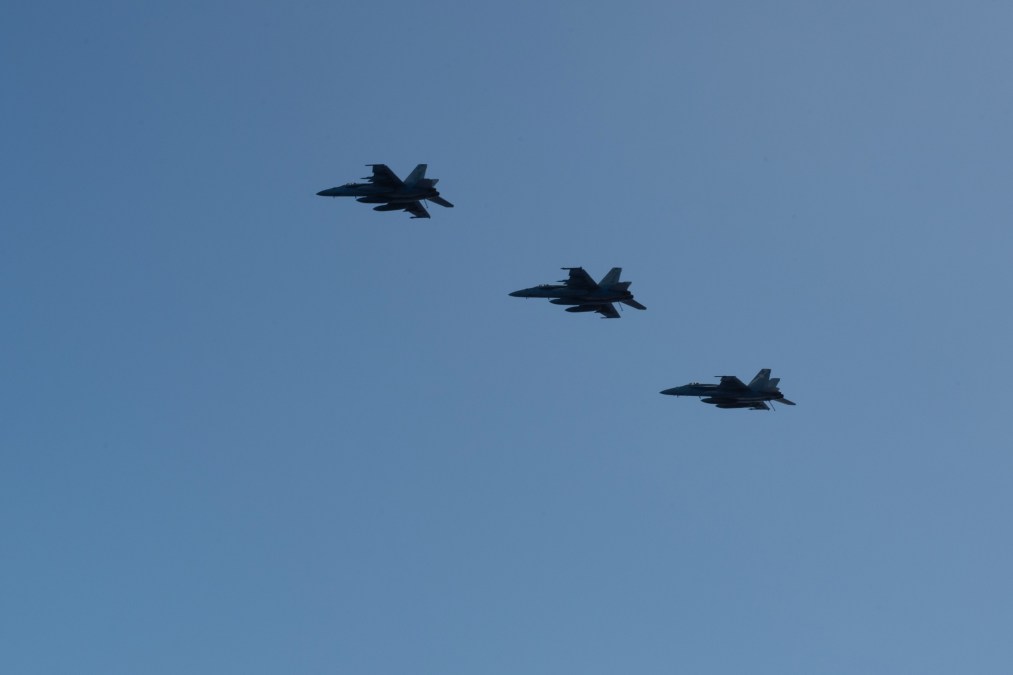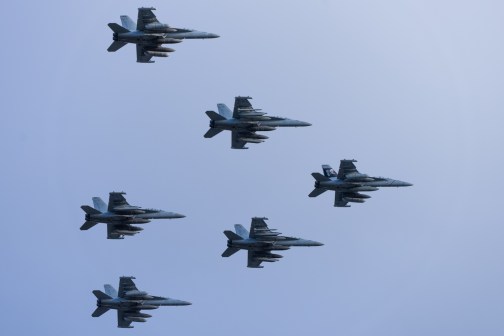Raytheon scores engineering and development contract for extended range airborne electronic attack pod

The Navy awarded Raytheon, an RTX company, a $192 million contract to develop an extended range capability for the service’s next-generation airborne electronic attack capability.
The program is for the Next Generation Jammer Mid-Band Extended (NGJ-MBX), which will be mounted on EA-18G Growlers. Raytheon won the initial contract for the Mid-Band pod in 2016.
Overall, the Next Generation Jammer — a cooperative program with the Royal Australian Air Force — is the replacement for the decades-old ALQ-99. The program was initially broken up into three separate jamming pods covering various ends of the electromagnetic spectrum based upon the criticality of current and emerging threats: Mid-Band, Low-Band (which L3Harris won in August after years of protest) and High-Band (for which there hasn’t been any line item in Navy budgets since at least fiscal 2020).
The pods are expected to be significantly more powerful than the ALQ-99, with extended range and the ability to jam multiple targets simultaneously. With the increase in sophistication and range of adversaries’ military systems — especially across the Pacific — such a jamming capability could be critically important for the U.S. military in future conflicts.
In 2023, the Navy initiated a change to the Mid-Band program to develop an extended pod, NGJ-MBX, to provide increased range and address specific gaps in the upper frequency. This capability provides a frequency extension of the Mid-Band as the quickest way to address near-term threats in light of the High-Band capability that remains unfunded.
According to a Raytheon spokesperson, the company was issued a study and risk reduction contract in December 2022, and now the engineering and manufacturing development award on Sept. 27, 2024.
A Raytheon release this week noted the new $192 million contract will serve to upgrade the current Mid-Band system providing a modification to extend the frequency range, counter additional threats and provide additional capabilities to improve operational effectiveness. The spokesperson noted the upgraded MBX arrays will be produced and integrated on new production pods and retrofitted to fielded Mid-Band systems.
“Offensive Electronic Attack provides a tremendous combat capability supporting strike packages and kinetic weapons across a broad range of missions,” said Barbara Borgonovi, president of Naval Power at Raytheon. “With this upgrade, we’ll ensure our naval aviators in all theaters are better prepared to counter new adversary threats and provide greater combat power throughout their missions.”
In fiscal 2025 budget documents, the Navy requested $86.7 million in research and development funds for the MBX effort. Work in fiscal year 2025 is projected to include detailed design development of the Advanced Frequency Converter Module and MBX arrays and a system critical design review. The plan for fiscal year 2025 is also to procure prototype material with aircraft/software integration efforts beginning along with preparation for testing efforts.
The documents note the Navy wants to deliver the MBX capability to the fleet as quickly as possible.





